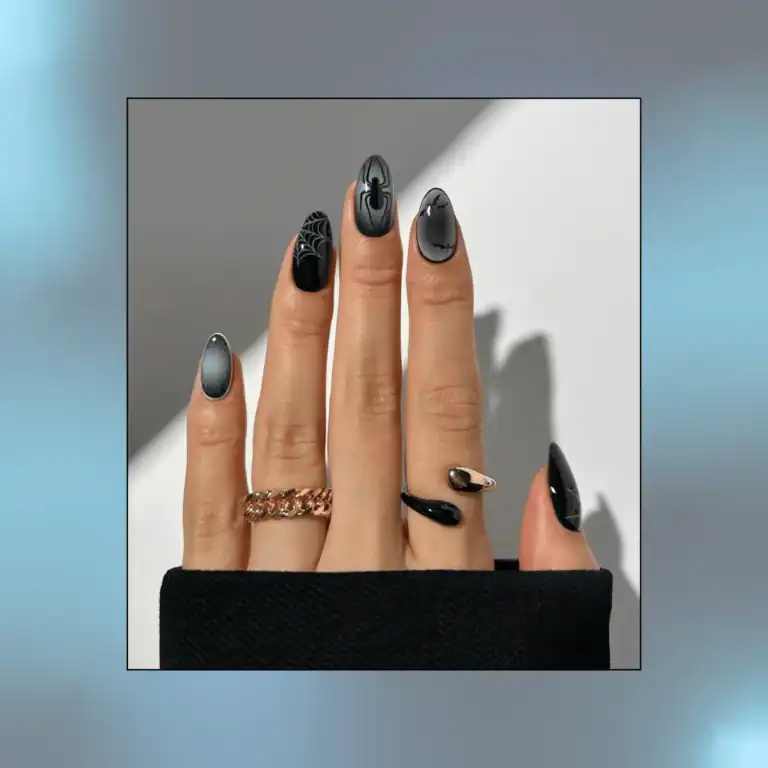Imagine that you’ve just stepped out of the shower, hair freshly washed and conditioned. But wait—within minutes, your strands are parched, frizzy, and crying out for moisture.
Sound familiar? Welcome to the world of high porosity hair!
We’ve been focusing on high porosity hair lately and for good reason. It’s an often overlooked aspect of hair care that doesn’t always get the attention it deserves. Yet, understanding your hair’s porosity is a crucial factor in figuring out exactly what your hair needs and what might be going wrong with your current routine.
And let’s face it, our locks have been through it all. From the resurgence of Y2K-inspired crimped styles to the pandemic-induced DIY dye jobs, our hair has weathered MANY storms.
Add to that the rising awareness about hair health and texture diversity, and suddenly everyone’s wondering if their hair is low, medium, or high porosity.
But once you know what you’re dealing with, you can tailor your hair care routine to give your tresses exactly what they need.
And that’s where our fab five DIY hair masks for high porosity hair come in – they’re like a tall glass of water for your thirsty strands, with ingredients so nourishing you might be tempted to eat them!
Understanding High Porosity Hair: The Science Behind Your Strands
Before we dive into our mask masterpieces, let’s break down what’s really going on with your high porosity hair.
High porosity hair occurs when these cuticles (the protective outer layer of your hair) are lifted or damaged. This can happen due to various factors:
- Genetic lottery: Some of us are simply born with it. Thanks, Mum and Dad!
- Chemical treatments: Those gorgeous highlights might be costing you more than just pounds.
- Heat styling: Your flat iron might be giving you sleek looks, but it’s also opening those cuticle doors wide.
- Environmental factors: Sun, pollution, and hard water are not friends of your hair.
When your cuticles are raised, moisture gets in quickly, but it also escapes just as fast. This leaves you with hair that’s:
- Prone to frizz
- Quick to tangle
- Easily damaged and prone to split ends
- Difficulty holding onto colour
But here’s the silver lining!
High porosity hair is also quick to absorb nutrients. This means that when you treat it right, it soaks up all that goodness like a sponge. And that’s exactly what we’re going to do with our fabulous five DIY masks.
YOU MIGHT LIKE THESE TOO:
- Got High Porosity Hair? These Are The Oils You Should Be Using
- Best Deep Conditioners For High Porosity Hair, According To A Trichologist
- Argan Oil Or Coconut Oil, Which One Is Best For Your Hair?
5 DIY Hair Masks for Your High Porosity Hair
1. The Protein Boost Mask

This mask provides a protein treatment that can help strengthen the hair shaft. The amino acids in the egg and yoghurt work to repair damaged hair, while honey helps retain moisture.
WHAT YOU NEED:
- 1 egg
- 2 tablespoons Greek yoghurt
- 1 tablespoon honey
WHAT TO DO:
- In a small bowl, whisk the egg until well beaten.
- Add Greek yoghurt and honey, mixing until you have a smooth consistency.
- Apply the mask to damp hair, focusing on the lengths and ends.
- Massage gently into your scalp and hair.
- Cover with a shower cap and leave on for 30 minutes.
- Rinse thoroughly with cool water, then shampoo and condition as usual.
2. The Moisture Lock Mask

Perfect for deep conditioning, this mask helps your hair retain moisture. The healthy fats in avocado and coconut oil nourish dry hair, while aloe vera soothes the scalp.
WHAT YOU NEED:
- 1 ripe avocado
- 2 tablespoons coconut oil
- 1 tablespoon aloe vera gel
WHAT TO DO:
- Mash the ripe avocado in a bowl until smooth.
- Melt the coconut oil (if solid) and add to the avocado along with the aloe vera gel.
- Mix well until you have a creamy consistency.
- Apply to damp hair from roots to tips, ensuring even coverage.
- Put on a shower cap and leave for 45 minutes.
- Rinse out thoroughly with lukewarm water, then shampoo and condition as normal.
3. The Frizz Fighter Mask

This mask helps smooth hair cuticles, reducing frizz and preventing split ends. The combination of oils provides intense hydration for your thirsty strands.
WHAT YOU NEED:
- 2 tablespoons shea butter
- 1 tablespoon argan oil
- 5 drops lavender essential oil
WHAT TO DO:
- Melt the shea butter using a double boiler or microwave in short bursts.
- Once melted, remove from heat and add argan oil and lavender essential oil.
- Mix well and allow to cool slightly (but not solidify).
- Apply the mixture to damp hair, paying extra attention to frizzy areas.
- Comb through to ensure even distribution.
- Leave on for 30 minutes, then rinse thoroughly and style as usual.
RELATED: Argan Oil vs Jojoba Oil: Which One Is Better For Your Hair?
4. The Scalp Soother Mask

While focusing on hair care, don’t forget about your scalp! This mask helps balance pH levels and can alleviate itchiness often associated with dry scalp.
WHAT YOU NEED:
- 2 tablespoons coconut oil
- 1 tablespoon apple cider vinegar
- 5 drops tea tree oil
WHAT TO DO:
- In a small bowl, mix coconut oil, apple cider vinegar, and tea tree oil.
- Part your hair into sections and apply the mixture directly to your scalp.
- Gently massage the mixture into your scalp for 5 minutes.
- Cover with a shower cap and leave on for 20 minutes.
- Rinse thoroughly, then shampoo and condition as normal.
RELATED: How To Do An Apple Cider Vinegar Hair Rinse
5. The Shine Enhancer Mask

This mask not only provides deep conditioning but also leaves your hair with a beautiful shine. The potassium in bananas helps strengthen hair and prevent split ends.
WHAT YOU NEED:
- 1 ripe banana
- 1 tablespoon olive oil
- 1 teaspoon honey
WHAT TO DO:
- Mash the banana in a bowl until there are no lumps.
- Add olive oil and honey, mixing until well combined.
- Apply the mask to damp hair, ensuring even coverage from roots to ends.
- Cover with a shower cap and leave on for 30 minutes.
- Rinse out thoroughly with cool water, then shampoo and condition as usual.
Tips For Using These Masks
- Be patient – it may take a few applications before you see significant improvements in your hair’s health and appearance.
- Perform a patch test before applying any new ingredients to your hair or scalp.
- Use these masks once a week for best results.
Additional Tips for High Porosity Hair Care
- Limit heat styling to prevent further damage.
- Use protective styling when possible to shield your hair from environmental stressors.
- Always use a heat protectant when heat styling is necessary.
- Be gentle with your wet hair, as it’s more prone to breakage.
- Consider incorporating regular protein treatments into your hair care routine.
Remember, everyone’s hair is unique. What works for one person might not work for another, so don’t be afraid to experiment and find what works best for your hair type.
FAQs
Q. Is high porosity hair healthier?
A. Not necessarily. High porosity hair isn’t inherently healthier or unhealthier than other hair types. It simply means that your hair cuticles are more open, which can make your hair more susceptible to damage and moisture loss. However, with proper care and the right products, high porosity hair can be just as healthy and beautiful as any other hair type.
Q. Is there a way to fix high porosity hair?
A. While you can’t permanently “fix” or change your hair’s porosity (as it’s largely determined by genetics), you can certainly improve its health and manageability. Focus on protein treatments to strengthen the hair shaft, deep conditioning to improve moisture retention, and using products that help seal the cuticle. Consistent care can make a significant difference in the look and feel of high porosity hair.
Q. How often should high porosity hair be washed?
A. There’s no one-size-fits-all answer, but generally, high porosity hair benefits from less frequent washing. Aim for 1-2 times a week to avoid stripping your hair of its natural oils. On non-wash days, you can refresh your hair with water or a leave-in conditioner to add moisture without the full wash process.
Q. What is best to avoid for hair with high porosity?
A. High porosity hair is particularly vulnerable to certain practices and ingredients:
- Avoid harsh sulphates in shampoos, which can further dry out your hair.
- Limit heat styling, as high porosity hair is more susceptible to heat damage.
- Stay away from alcohol-based products, which can be drying.
- Be cautious with protein treatments – while beneficial, too much protein can lead to brittle hair.
- Avoid rough towel-drying, which can cause frizz and breakage.
Q. Is high porosity hair usually curly?
A. High porosity hair can be of any texture – straight, wavy or curly. While it’s true that many people with curly hair have high porosity (often due to the structure of curly hair), not all high porosity hair is curly, and not all curly hair is high porosity. Your hair’s porosity is independent of its curl pattern.
Final Thoughts
By trying out one or more of these DIY hair masks for high porosity hair, you’ve essentially unlocked a low-cost and easy way to help your hair retain moisture and reduce frizz.
Just remember to be consistent and don’t be afraid to experiment!
Your hair is unique, and what works best might be a combination of techniques or a slight tweak to one of these masks. Listen to your hair (yes, it does speak, in its own way!), and adjust as needed.







